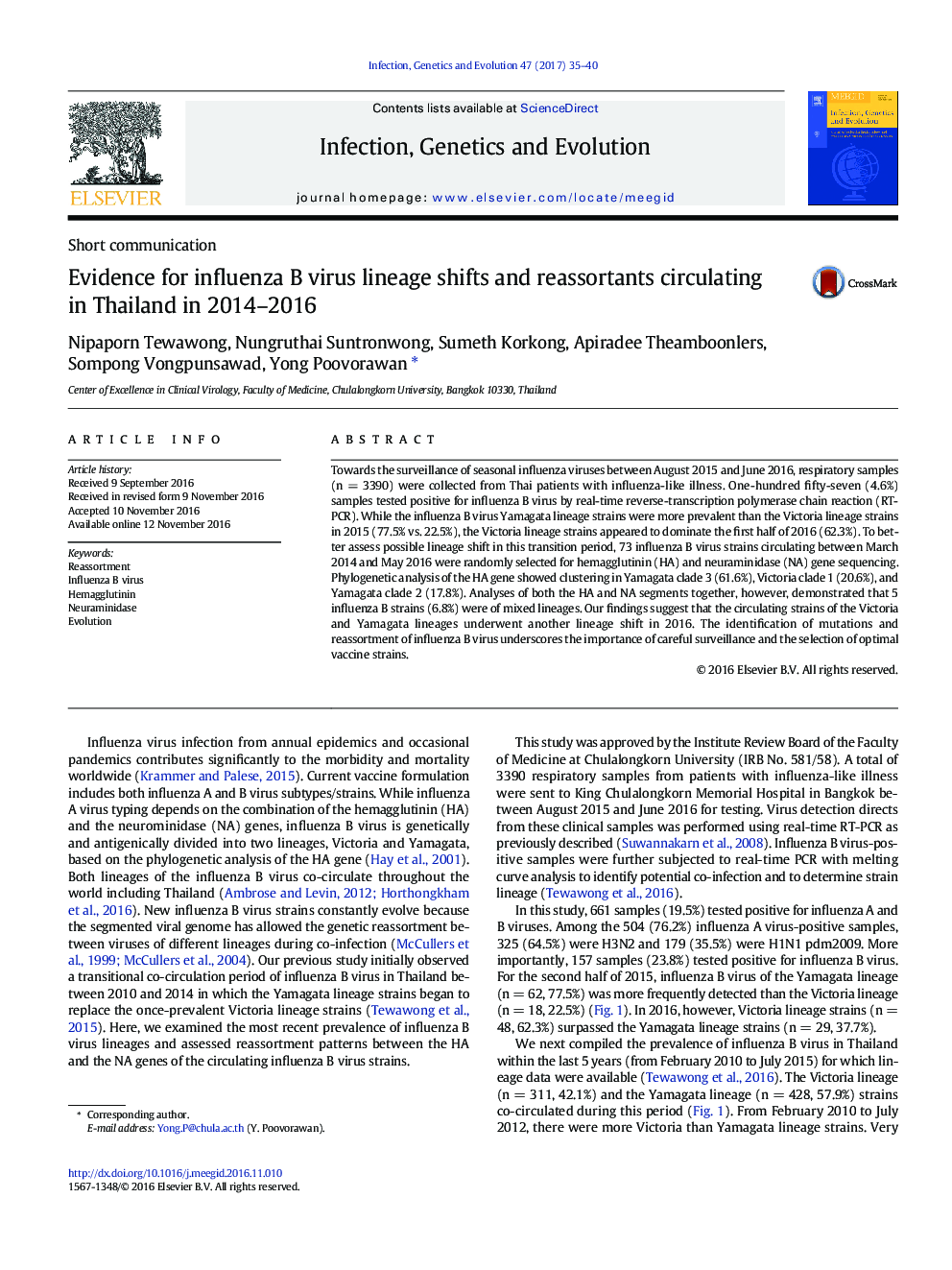| Article ID | Journal | Published Year | Pages | File Type |
|---|---|---|---|---|
| 5590479 | Infection, Genetics and Evolution | 2017 | 6 Pages |
Abstract
Towards the surveillance of seasonal influenza viruses between August 2015 and June 2016, respiratory samples (n = 3390) were collected from Thai patients with influenza-like illness. One-hundred fifty-seven (4.6%) samples tested positive for influenza B virus by real-time reverse-transcription polymerase chain reaction (RT-PCR). While the influenza B virus Yamagata lineage strains were more prevalent than the Victoria lineage strains in 2015 (77.5% vs. 22.5%), the Victoria lineage strains appeared to dominate the first half of 2016 (62.3%). To better assess possible lineage shift in this transition period, 73 influenza B virus strains circulating between March 2014 and May 2016 were randomly selected for hemagglutinin (HA) and neuraminidase (NA) gene sequencing. Phylogenetic analysis of the HA gene showed clustering in Yamagata clade 3 (61.6%), Victoria clade 1 (20.6%), and Yamagata clade 2 (17.8%). Analyses of both the HA and NA segments together, however, demonstrated that 5 influenza B strains (6.8%) were of mixed lineages. Our findings suggest that the circulating strains of the Victoria and Yamagata lineages underwent another lineage shift in 2016. The identification of mutations and reassortment of influenza B virus underscores the importance of careful surveillance and the selection of optimal vaccine strains.
Related Topics
Life Sciences
Agricultural and Biological Sciences
Ecology, Evolution, Behavior and Systematics
Authors
Nipaporn Tewawong, Nungruthai Suntronwong, Sumeth Korkong, Apiradee Theamboonlers, Sompong Vongpunsawad, Yong Poovorawan,
